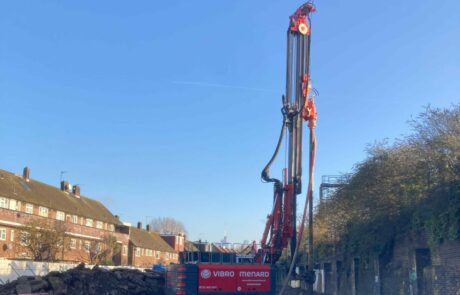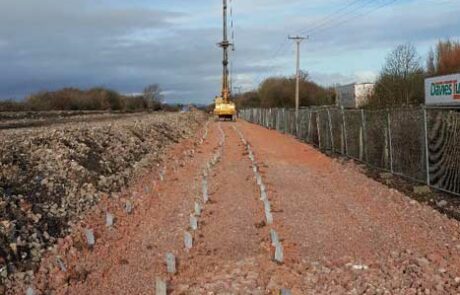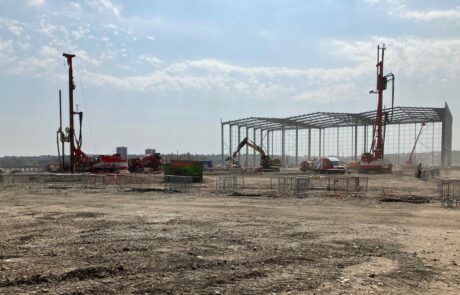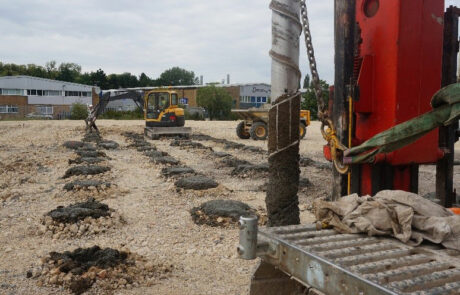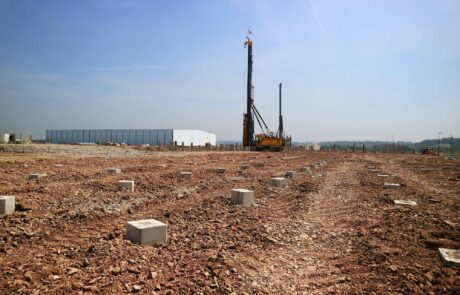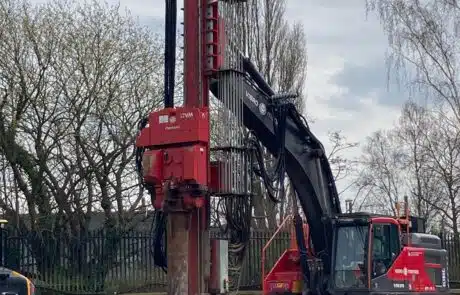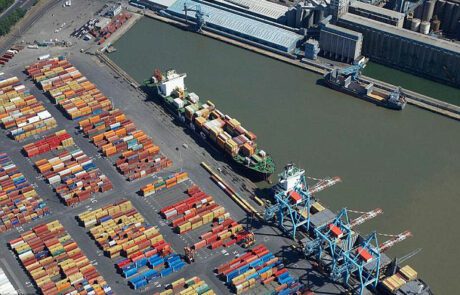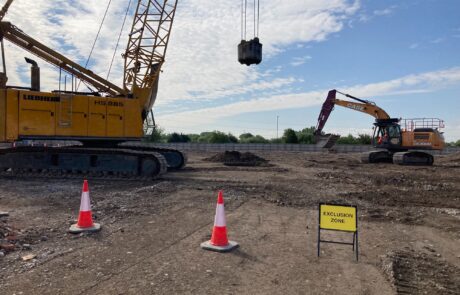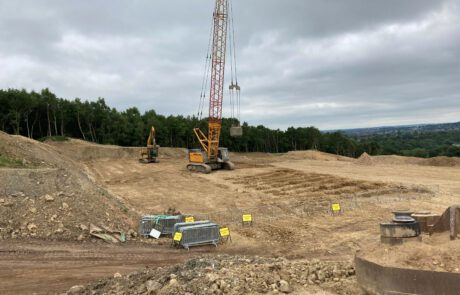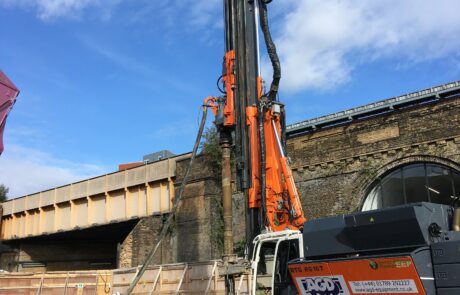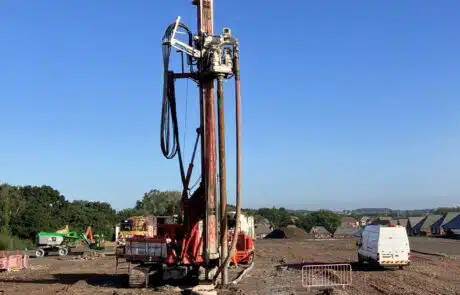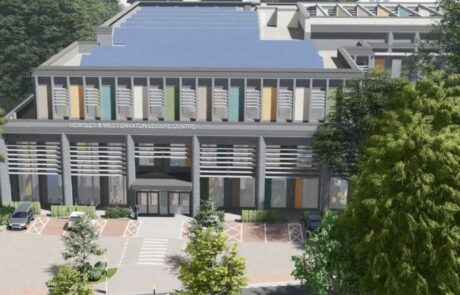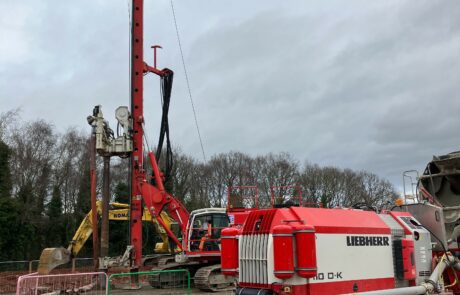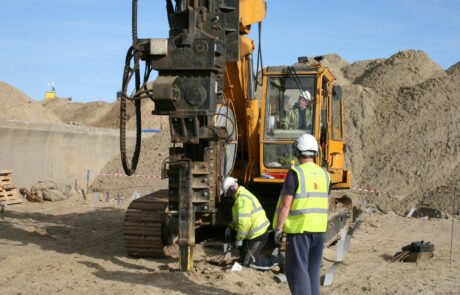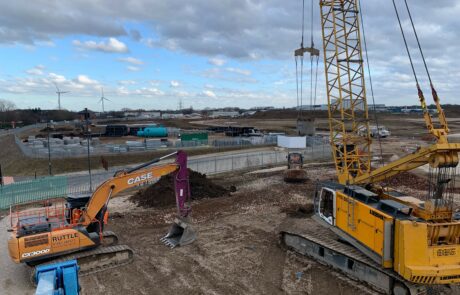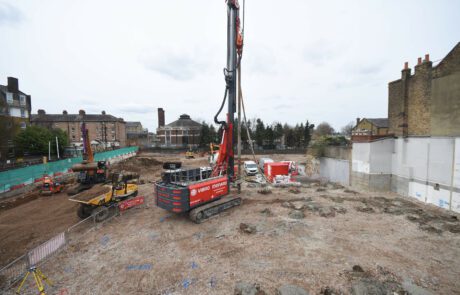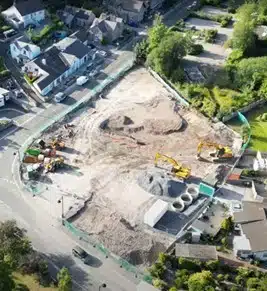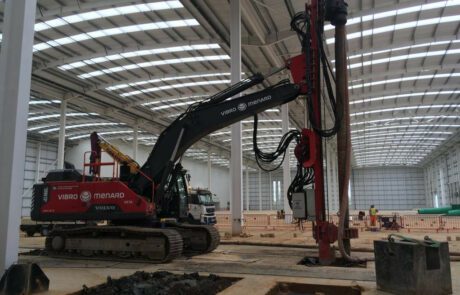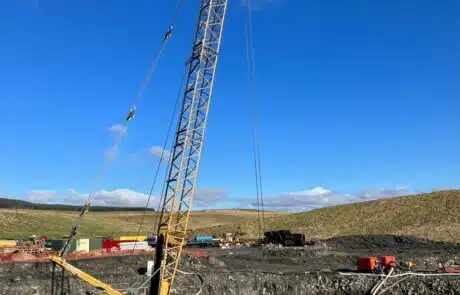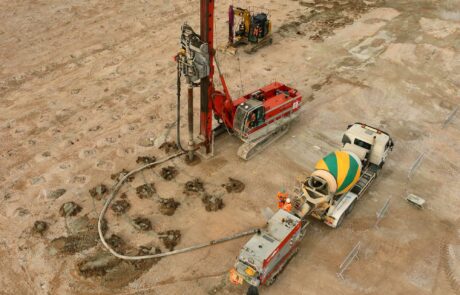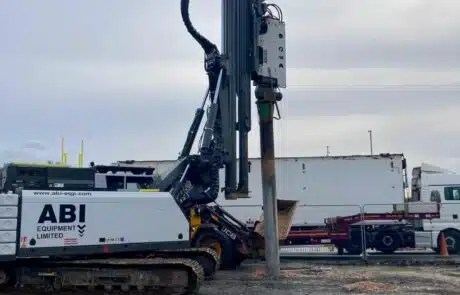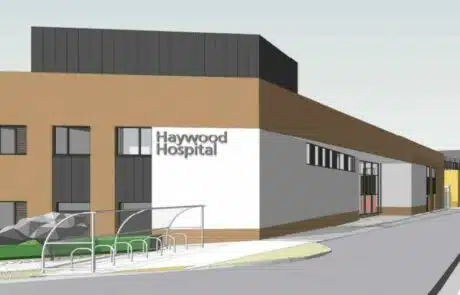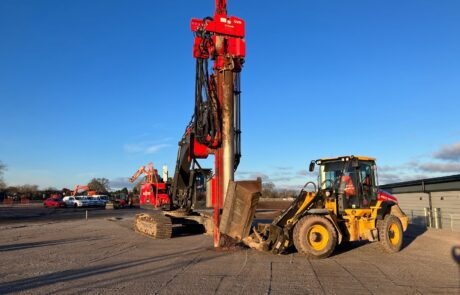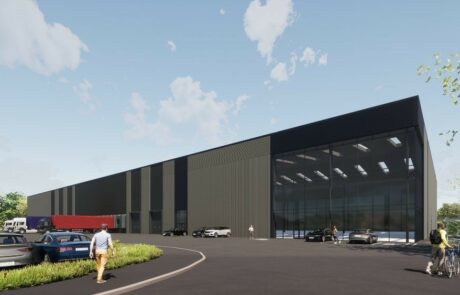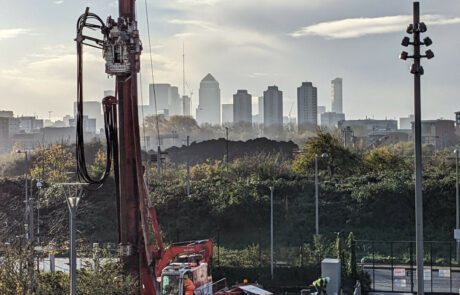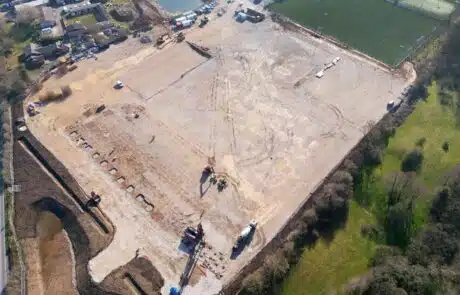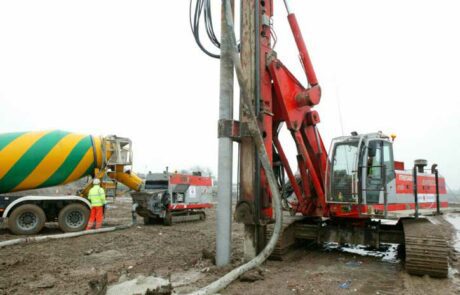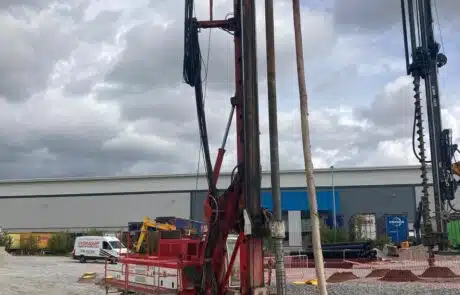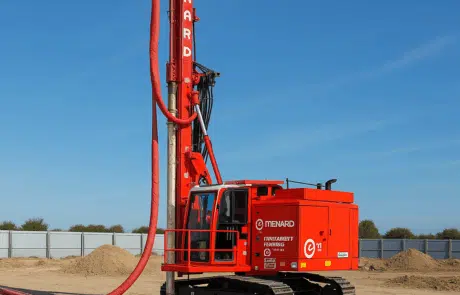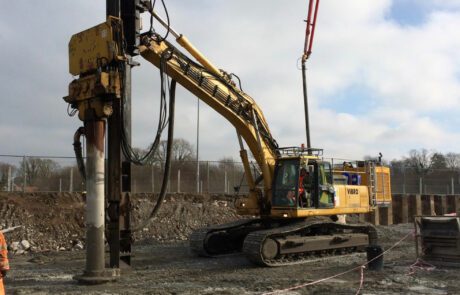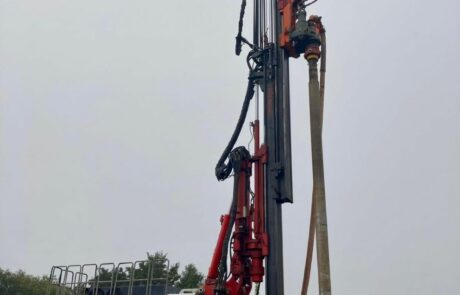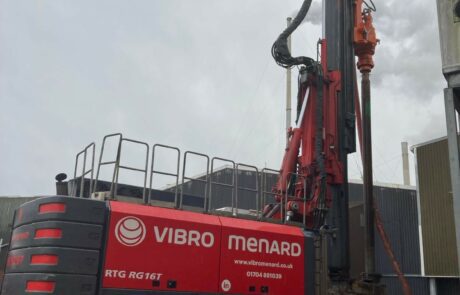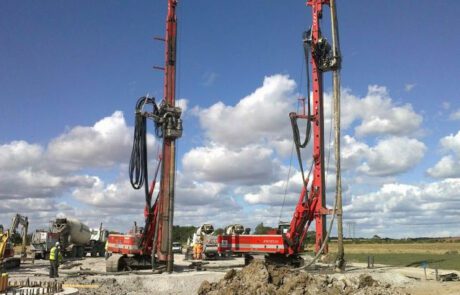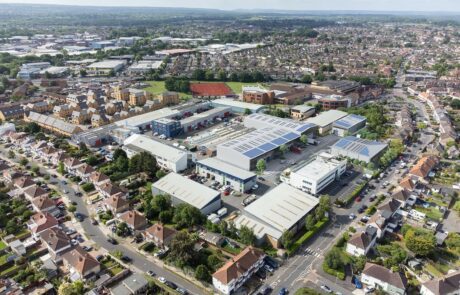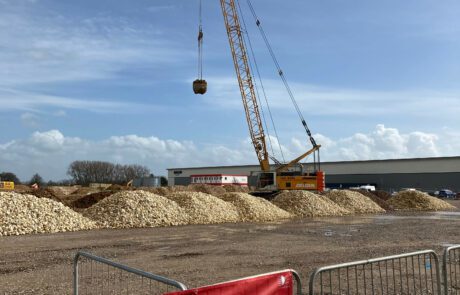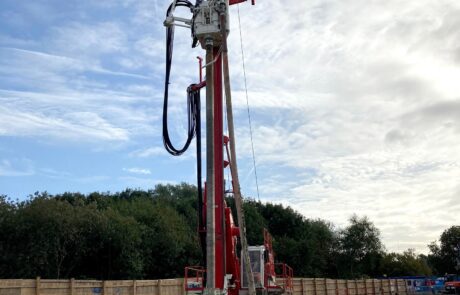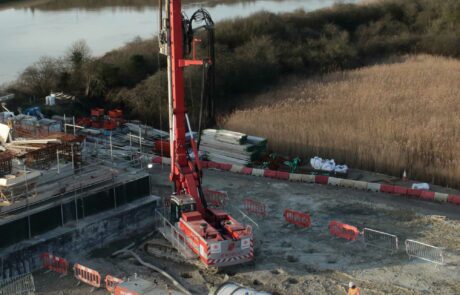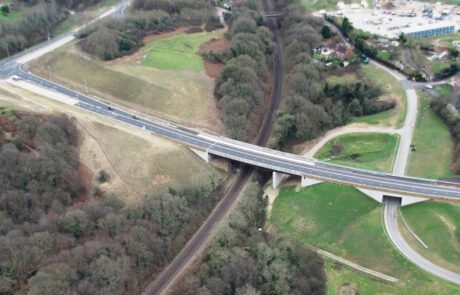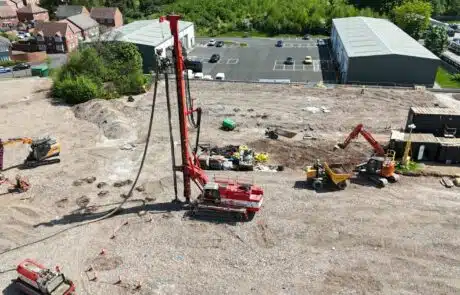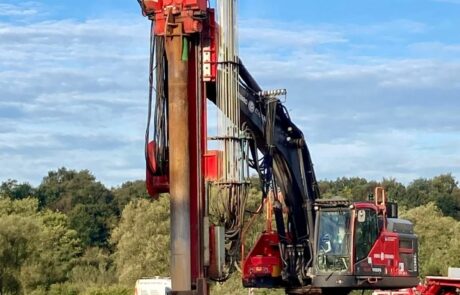OWNER:
HTI Group
ENGINEER:
TRP Consulting Engineers
GENERAL CONTRACTOR:
Portal Construction N.W. Ltd.
MAIN FIGURES:
c.2,800 Controlled Modulus Columns
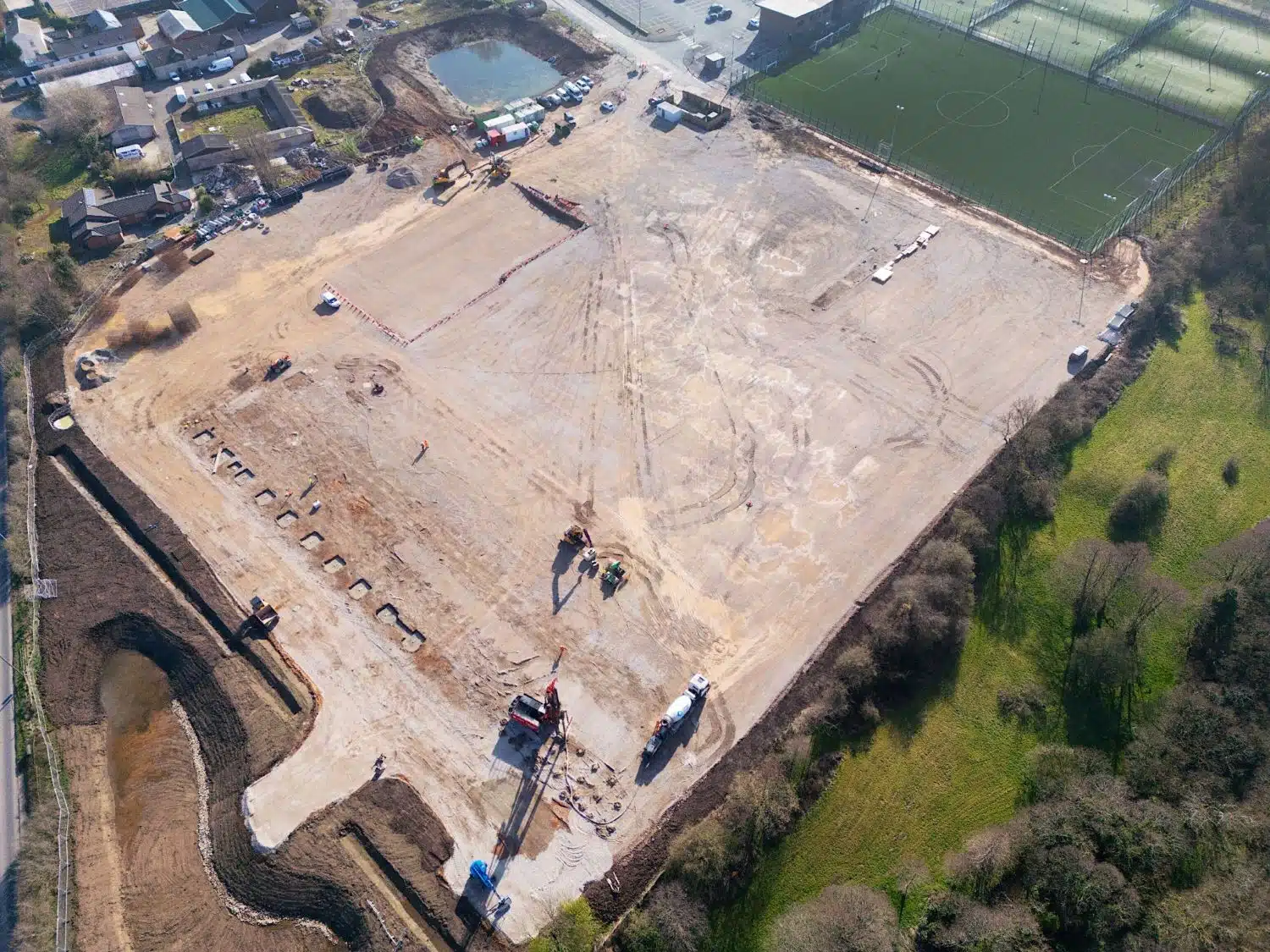
Project Details
Portal Construction engaged Menard to undertake ground improvement works beneath the new HTI headquarters building in Wesham, utilising Controlled Modulus Columns (CMC) technology. The project was delivered over a six-week period, initially using a single CMC rig. To ensure timely completion, a second rig was mobilised towards the latter stages of the programme.
Ground Conditions
Cone Penetration Tests (CPTs) were conducted to support the finalisation of the ground improvement design. Two soil models were considered during the design phase, typically comprising cement-stabilised sands underlain by natural silty clay, which was in turn underlain by natural sands. Treatment depths across the building footprint varied between 3.5 metres and 11.1 metres.
Solution
Menard proposed the use of Controlled Modulus Columns (CMC) as a ground improvement technique to facilitate the adoption of shallow foundations. This solution offered both cost and programme advantages over the originally proposed piled foundation scheme. The CMC system was designed to limit residual settlements to 25 mm, maintain relative differential settlements below 1/750, and increase the allowable bearing capacity to 200 kPa beneath footings and 65 kPa beneath the floor slab.
By the conclusion of the project, more than 2,750 CMCs had been installed, amounting to a combined length in excess of 22,400 linear metres. To verify performance and quality, ten plate load tests were conducted throughout the works.
Sustainable development
The adoption of Controlled Modulus Columns (CMC) in place of deep CFA piles significantly reduced the embodied carbon of the project. This was achieved by eliminating the need for high-carbon structural elements such as pile caps and suspended slabs. Furthermore, the additional site investigation using Cone Penetration Testing (CPT) enabled optimisation of the CMC design, contributing to further reductions in embodied carbon and enhancing the overall sustainability of the solution.

